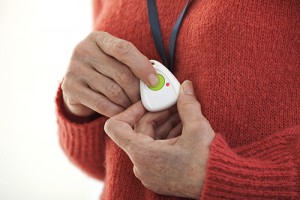 I came across an article on social robots that made me think about their potential uses. The first social robots were developed in the late 1990s as an experiment to create an optimal human-machine interface. These robots generally have human characteristics such as eyes and a mouth, and they can interact with humans based on visual and audio feedback gathered through microphones and cameras. They express themselves through speech and movement from their humanoid features.
I came across an article on social robots that made me think about their potential uses. The first social robots were developed in the late 1990s as an experiment to create an optimal human-machine interface. These robots generally have human characteristics such as eyes and a mouth, and they can interact with humans based on visual and audio feedback gathered through microphones and cameras. They express themselves through speech and movement from their humanoid features.
Origins
The first social robot was created by Cynthia Breazeal as part of her graduate studies at MIT. She is currently an associate professor of media arts and sciences at MIT as well as the director of the Media Lab’s Personal Robot Group. Her original research focused on the viability of human-robot interaction, and from this research she created Kismet, the first social robot. Since Kismet was created, other social robots have been built with even more sophisticated anthropomorphic features and more powerful sensors. These are fine for playing games, but how can they help us in our real lives? It turns out that they may have profound potential for helping some people.
Breaking Through Autism
Social robots work well with children because they can be made to appear friendlier than humans. This is especially important for children with autism. In a recent study at Vanderbilt University, it was found that children with autism spectrum disorder paid more attention to robots and followed their instructions almost as well as they followed instructions issued from humans. There is a lot to decode in a human face when trying to learn a new task. Emotions such as anger, sadness, happiness, fatigue, and boredom can be subtle, and children may not recognize the cues quickly. Robots present a nonthreatening interface that increases the development of social communication skills in children, particularly those with autism.
Socially Assistive Robots
A robot named Paro is helping seniors to become more focused and engaged. The robot resembles a baby seal and is designed to fill the role of a pet without the potential mess or responsibilities. The Paro robot has microprocessors and sensors that respond to touch, light, movement, and voices. In a pilot project, it proved especially helpful with seniors with dementia. While it is not designed to take the place of family members or caregivers, researchers have found that the nonthreatening nature of Paro tends to draw people out and encourages them to talk about things in their lives or their memories.
Thoughts
I have written before about assistive technologies, but I am excited about the development of social robots that can help foster communication skills. We have had robots for years that operate in manufacturing and work in areas that may be hazardous to humans. Robots that are more personable and interactive can help break through barriers that we sometimes struggle to breach. Some are concerned that robots will take over tasks that we should be doing for ourselves, but in this case, I welcome the assistance. What do you think? Let me know.
Kelly Brown is an IT professional, adjunct faculty for the University of Oregon, and academic director of the UO Applied Information Management Master’s Degree Program. He writes about IT and business topics that keep him up at night.



